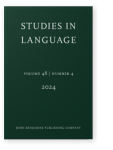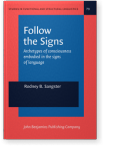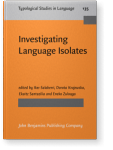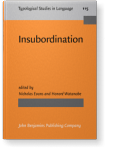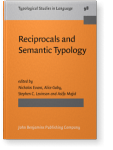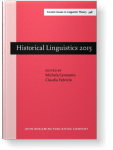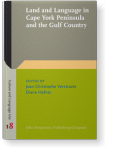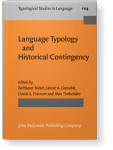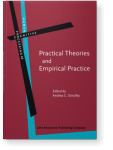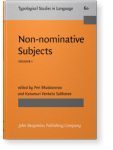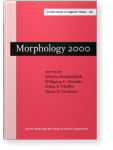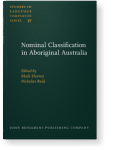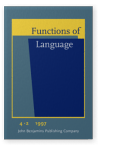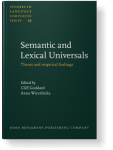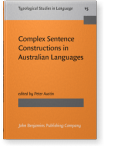Nicholas Evans
List of John Benjamins publications for which Nicholas Evans plays a role.
Journal
Book series
Titles
Insubordination
Edited by Nicholas Evans and Honoré Watanabe
[Typological Studies in Language, 115] 2016. xii, 435 pp.
Subjects Semantics | Syntax | Theoretical linguistics | Typology
Reciprocals and Semantic Typology
Edited by Nicholas Evans, Alice Gaby, Stephen C. Levinson and Asifa Majid
[Typological Studies in Language, 98] 2011. viii, 349 pp.
Subjects Semantics | Theoretical linguistics | Typology
2019 Chapter 26. Linguistic divergence under contact Historical Linguistics 2015: Selected papers from the 22nd International Conference on Historical Linguistics, Naples, 27-31 July 2015, Cennamo, Michela and Claudia Fabrizio (eds.), pp. 563–592 | Chapter
The normal result of language contact is widely assumed to be convergence, as manifested in classic Sprachbünde and caused through metatypy, cognitive economy, shared norms of conversational practice, etc. Yet at the same time there is growing evidence that contact can also produce divergence,… read more
2016 Born, signed and named: Naming, country and social change among the Bentinck Islanders Land and Language in Cape York Peninsula and the Gulf Country, Verstraete, Jean-Christophe and Diane Hafner (eds.), pp. 305–336 | Article
The rich literature on traditional naming practices in Australia has tended to take a static perspective, yet naming systems can respond in interesting ways to social change. For the Bentinck Islanders (Kaiadilt; language spelled Kayardild) of the South Wellesley Islands in the Gulf of Carpentaria,… read more
2016 Chapter 1. The dynamics of insubordination: An overview Insubordination, Evans, Nicholas and Honoré Watanabe (eds.), pp. 1–38 | Article
This chapter has a triple function, as an introduction to the phenomenon of insubordination with particular exemplification from the Australian language Kayardild, a review article drawing together the last decade of research on the topic, and a reasoned synthesis of the chapters comprising this… read more
2013 Marking versus indexing: Revisiting the Nichols marking-locus typology Language Typology and Historical Contingency: In honor of Johanna Nichols, Bickel, Balthasar, Lenore A. Grenoble, David A. Peterson and Alan Timberlake (eds.), pp. 69–90 | Article
In this article, we build on Johanna Nichols’s influential typological distinction between head and dependent marking by supplementing it with a further dimension, that of indexing. We focus on possessive constructions. Whereas marking indicates where morphology about a relationship goes, indexing… read more
2012 Nen assentives and the phenomenon of dialogic parallelisms Practical Theories and Empirical Practice: A linguistic perspective, Schalley, Andrea C. (ed.), pp. 159–184 | Article
A task for ontolinguistics is to delimit the set of grammatical devices sensitive to the speech-act nexus – whether speech-act role (speaker, hearer, etc.), knowledge asymmetries (ignoratives and demonstratives), speech-act goals (imperatives, questions, etc.), or social relations (e.g. honorifics). read more
2011 6. Mundari reciprocals Reciprocals and Semantic Typology, Evans, Nicholas, Alice Gaby, Stephen C. Levinson and Asifa Majid (eds.), pp. 115–128 | Article
This paper investigates the semantics of reciprocal constructions in Mundari, an Austro-Asiatic language of northern India. Two grammatical constructions express reciprocity: a basic construction, which infixes <pV> to verb roots, and a serialised construction adding -idi ‘take’ to the basic… read more
2011 1. Introduction: Reciprocals and semantic typology Reciprocals and Semantic Typology, Evans, Nicholas, Alice Gaby, Stephen C. Levinson and Asifa Majid (eds.), pp. 1–28 | Article
Reciprocity lies at the heart of social cognition, and with it so does the encoding of reciprocity in language via reciprocal constructions. Despite the prominence of strong universal claims about the semantics of reciprocal constructions, there is considerable descriptive literature on the… read more
2011 2. The semantics of reciprocal constructions across languages: An extensional approach Reciprocals and Semantic Typology, Evans, Nicholas, Alice Gaby, Stephen C. Levinson and Asifa Majid (eds.), pp. 29–60 | Article
How similar are reciprocal constructions in the semantic parameters they encode? We investigate this question by using an extensional approach, which examines similarity of meaning by examining how constructions are applied over a set of 64 videoclips depicting reciprocal events (Evans et al. 2004). read more
2007 4. Standing up your mind: Remembering in Dalabon The Language of Memory in a Crosslinguistic Perspective, Amberber, Mengistu (ed.), pp. 67–95 | Article
This paper explores the vocabulary of mental states, knowing, thinking and remembering in Dalabon, an Australian Aboriginal language. Though Dalabon has a rich vocabulary for the overall semantic domain of attention, thought, memory and forgetting, there are no expressions specifi cally dedicated… read more
2004 8. Experiencer objects in Iwaidjan languages (Australia) Non-nominative Subjects: Volume 1, Bhaskararao, Peri and Karumuri V. Subbarao (eds.), pp. 169–192 | Chapter
2002 7. Morphology, typology, computation Morphology 2000: Selected papers from the 9th Morphology Meeting, Vienna, 24–28 February 2000, Bendjaballah, Sabrina, Wolfgang U. Dressler, Oskar E. Pfeiffer and Maria D. Voeikova (eds.), pp. 91–104 | Chapter
1998 Iwaidja mutations and its origins Case, Typology and Grammar: In honor of Barry J. Blake, Siewierska, Anna and Jae Jung Song (eds.), pp. 115–150 | Article
1997 Head Classes and Agreement Classes in the Mayali Dialect Chain Nominal Classification in Aboriginal Australia, Harvey, Mark and Nicholas Reid (eds.), pp. 105–146 | Article
1994 8 Kayardild Semantic and Lexical Universals: Theory and empirical findings, Goddard, Cliff and Anna Wierzbicka (eds.), pp. 203–228 | Chapter
1988 Odd Topic Marking in Kayadild Complex Sentence Constructions in Australian Languages, Austin, Peter (ed.), pp. 219–266 | Article
